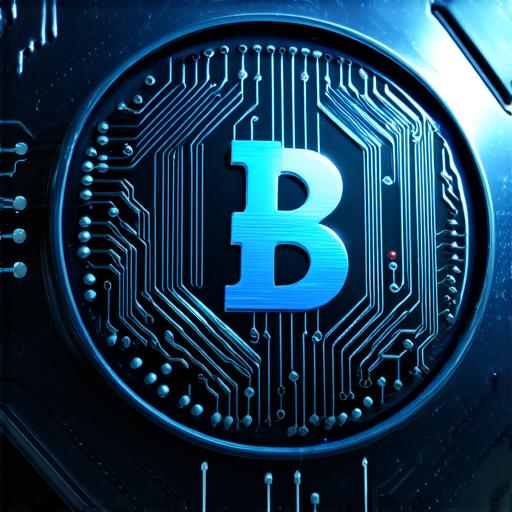What is a blockchain digital ledger
Blockchain is a decentralized digital ledger that records and stores data in blocks. It is an open-source technology that allows for secure and transparent transactions without the need for intermediaries.
Understanding Blockchain Technology
Blockchain technology was first introduced in 2008 with the creation of Bitcoin, a decentralized digital currency. Since then, blockchain has become a widely used technology for a variety of applications, including supply chain management, voting systems, and identity verification.
The key features of blockchain technology include:
-
Decentralization: The network is not controlled by a single entity or organization, making it highly resistant to tampering and manipulation.
-
Immutability: Once data is recorded on the blockchain, it cannot be altered or deleted, ensuring that records are tamper-proof and verifiable.
-
Transparency: All transactions on the blockchain are visible to anyone on the network, providing a high level of transparency and accountability.
-
Security: The use of cryptography and consensus algorithms ensures that the blockchain is highly secure and resistant to attacks.
What is a Digital Ledger?
A digital ledger is a record of transactions that takes place on a network, typically stored in a database or spreadsheet. It is used to track the movement of assets or information, such as money, goods, or intellectual property. In the context of blockchain, the digital ledger records all transactions that occur on the network and maintains an immutable record of these transactions.

How does a Blockchain Digital Ledger Work?
A blockchain digital ledger works by recording transactions in blocks, which are linked together in a chain. Each block contains a unique code called a hash, which is generated using the data in the block and a complex mathematical algorithm. The hash is used to link the block to the previous block in the chain, creating an unalterable record of all transactions that have taken place on the network.
When a new transaction occurs on the blockchain, it is added to a block and verified by a network of nodes. The nodes work together to validate the transaction and ensure that it meets certain criteria, such as being within the rules of the network and having enough assets to cover the cost of the transaction. Once the transaction is validated, it is added to the block and recorded on the digital ledger.
Benefits of a Blockchain Digital Ledger
The use of a blockchain digital ledger offers several benefits, including:
-
Increased security: The decentralized nature of the blockchain makes it highly resistant to hacking and tampering, ensuring that records are secure and verifiable.
-
Improved efficiency: Blockchain technology allows for transactions to be processed quickly and efficiently, without the need for intermediaries or middlemen.
-
Enhanced transparency: The use of a public ledger ensures that all transactions on the blockchain are visible to anyone on the network, providing a high level of transparency and accountability.
-
Reduced costs: By eliminating the need for intermediaries, blockchain technology can significantly reduce the cost of transactions, particularly in industries where intermediaries are common.
Real-Life Examples of Blockchain Digital Ledgers
There are several examples of blockchain digital ledgers in use today, including:
-
Bitcoin: As mentioned earlier, Bitcoin is a decentralized digital currency that uses blockchain technology to record and store transactions.
-
Ethereum: Ethereum is a blockchain platform that allows for the creation of decentralized applications (dApps) and smart contracts, which can be used for a variety of purposes, including supply chain management and identity verification.
-
Hyperledger Fabric: Hyperledger Fabric is a blockchain-based platform that allows for secure and transparent transactions in industries such as finance, healthcare, and supply chain management.
-
IBM Food Trust: IBM Food Trust is a blockchain-based network that enables the tracking of food products from farm to table, ensuring transparency and traceability throughout the supply chain.
FAQs
1. What is a blockchain digital ledger?
A blockchain digital ledger is a record of all transactions that take place on a blockchain network, which can be accessed and verified by anyone on the network.
2. How does a blockchain digital ledger work?
A blockchain digital ledger works by recording transactions in blocks, which are linked together in a chain. Each block contains a unique code called a hash, which is generated using the data in the block and a complex mathematical algorithm. The hash is used to link the block to the previous block in the chain, creating an unalterable record of all transactions that have taken place on the network.
3. What are the benefits of a blockchain digital ledger?
The use of a blockchain digital ledger offers several benefits, including increased security, improved efficiency, enhanced transparency, and reduced costs.
4. Are there any real-life examples of blockchain digital ledgers?
There are several examples of blockchain digital ledgers in use today, including Bitcoin, Ethereum, Hyperledger Fabric, and IBM Food Trust.
Conclusion
A blockchain digital ledger is a record of all transactions that take place on a blockchain network, which can be accessed and verified by anyone on the network. The use of blockchain technology offers several benefits, including increased security, improved efficiency, enhanced transparency, and reduced costs. Blockchain digital ledgers are being used in a variety of industries, including finance, healthcare, supply chain management, and more. As this technology continues to evolve, we can expect to see even more innovative applications and use cases emerge.



